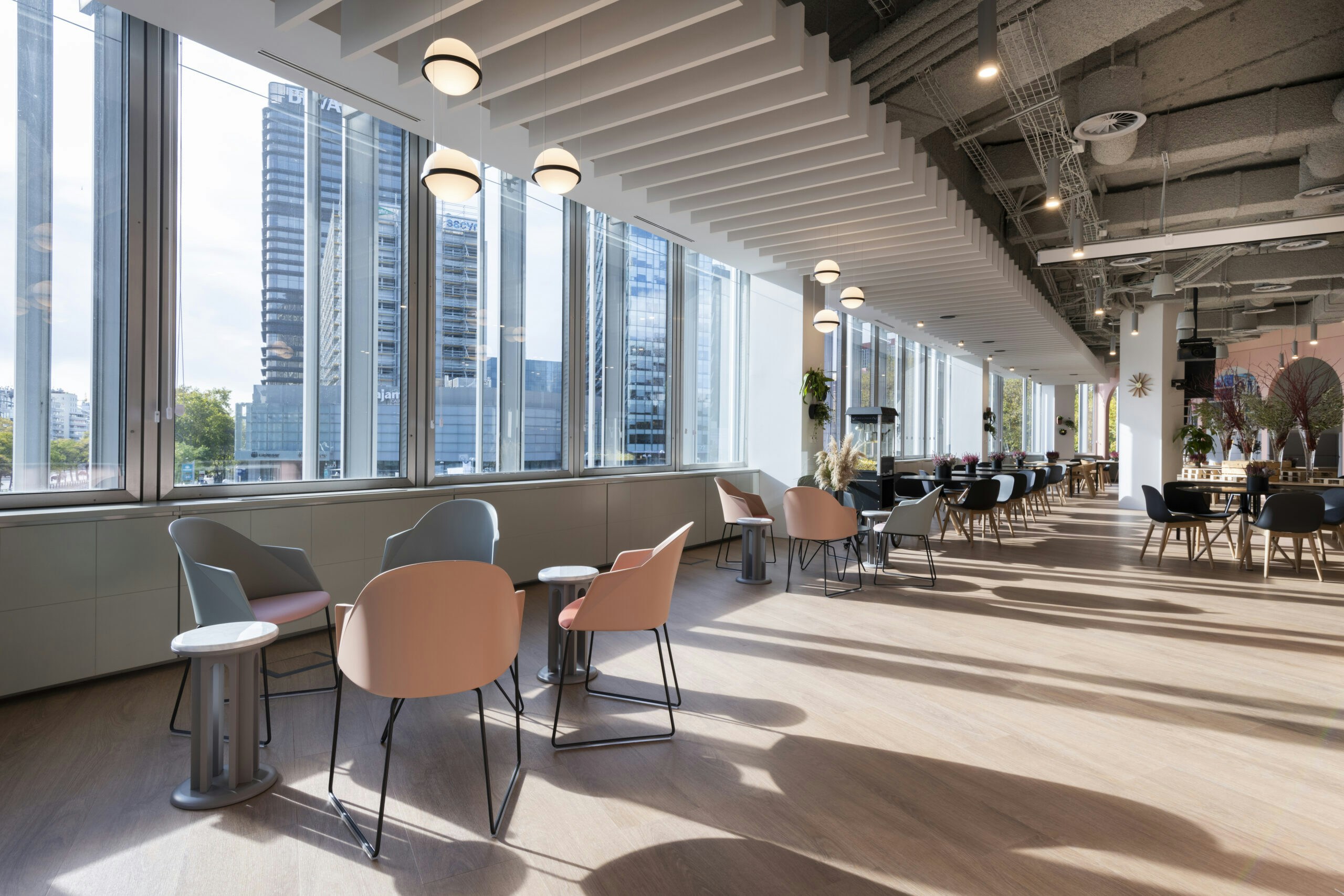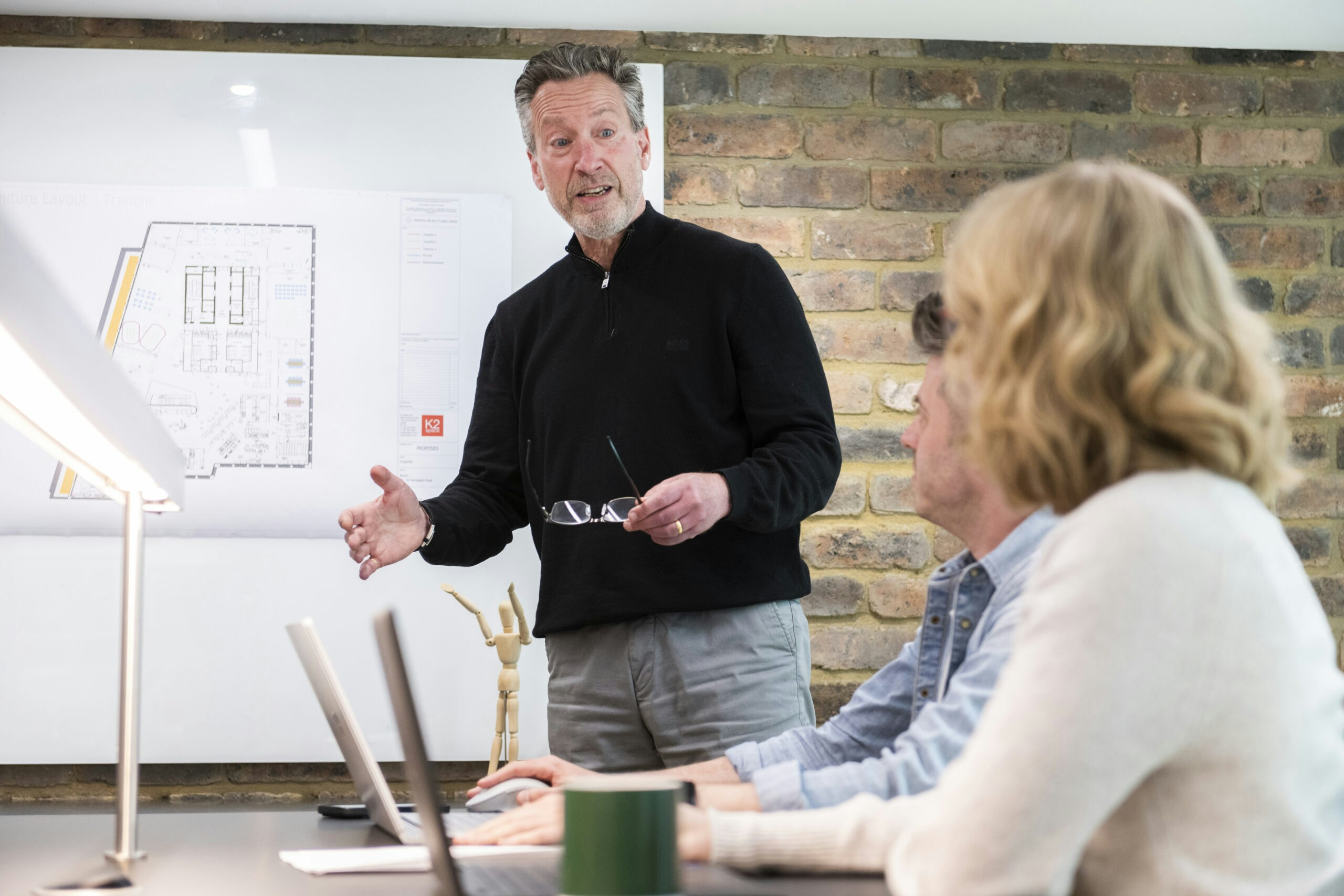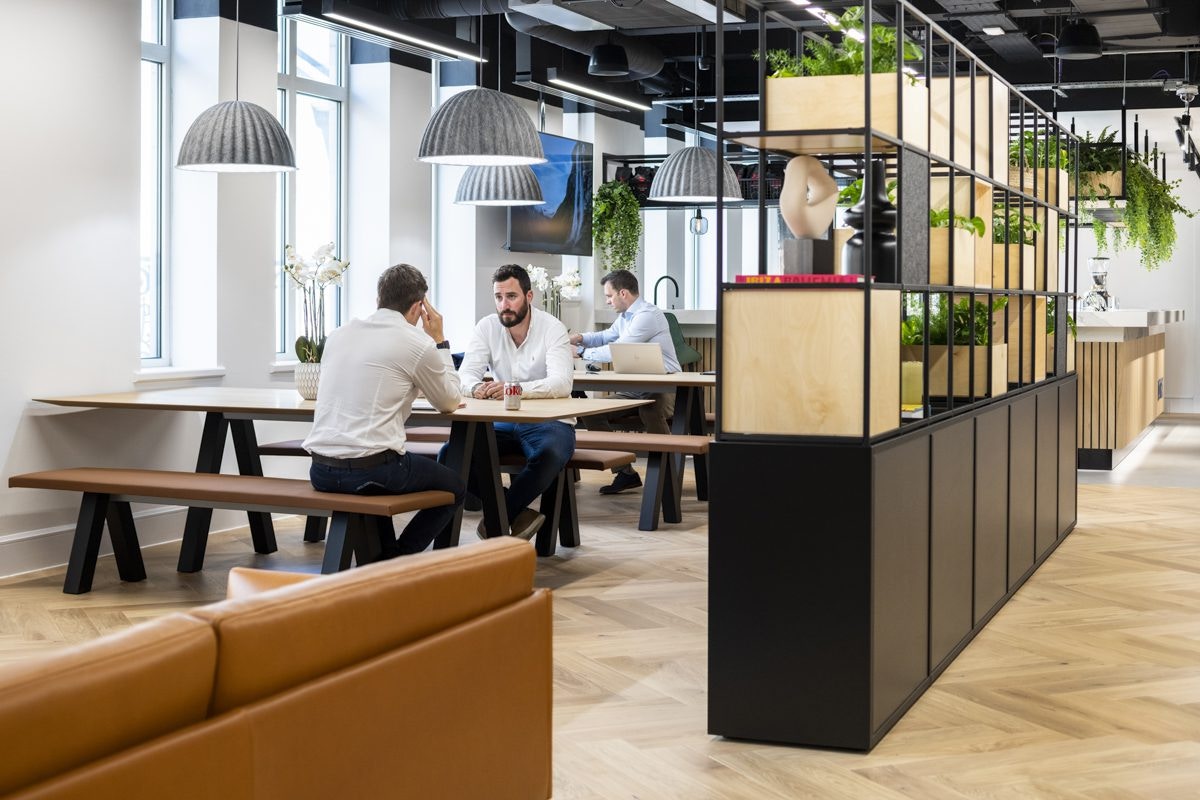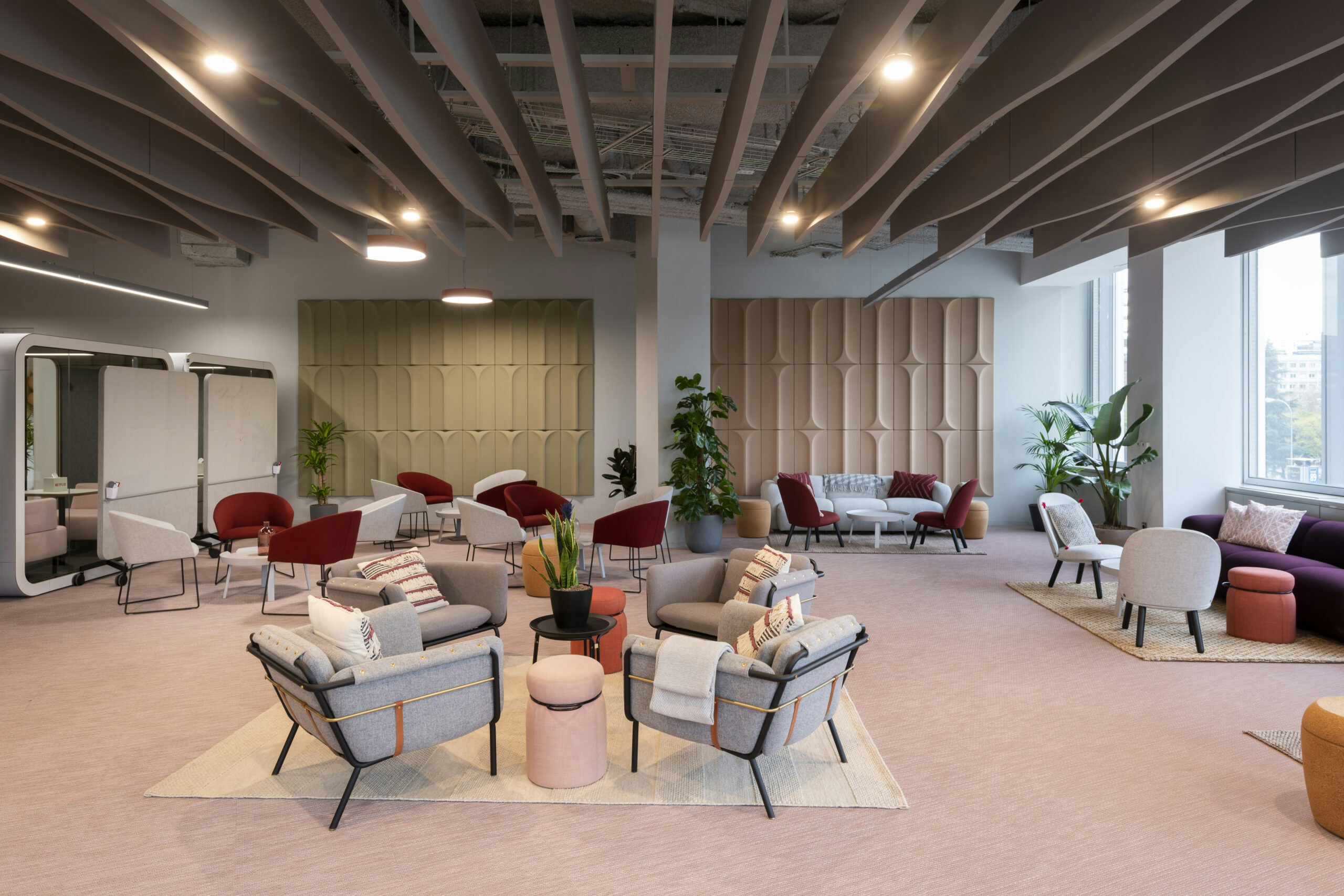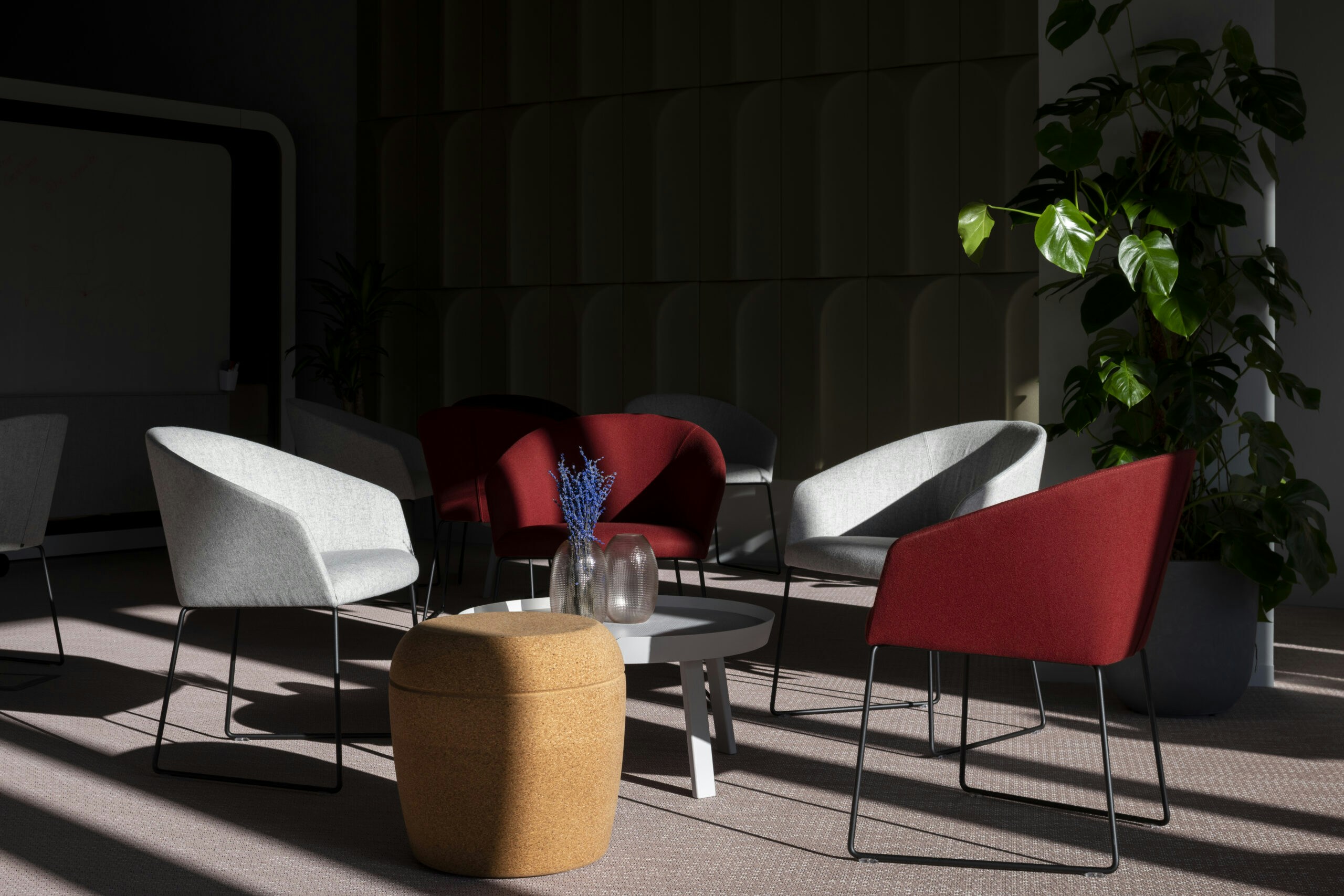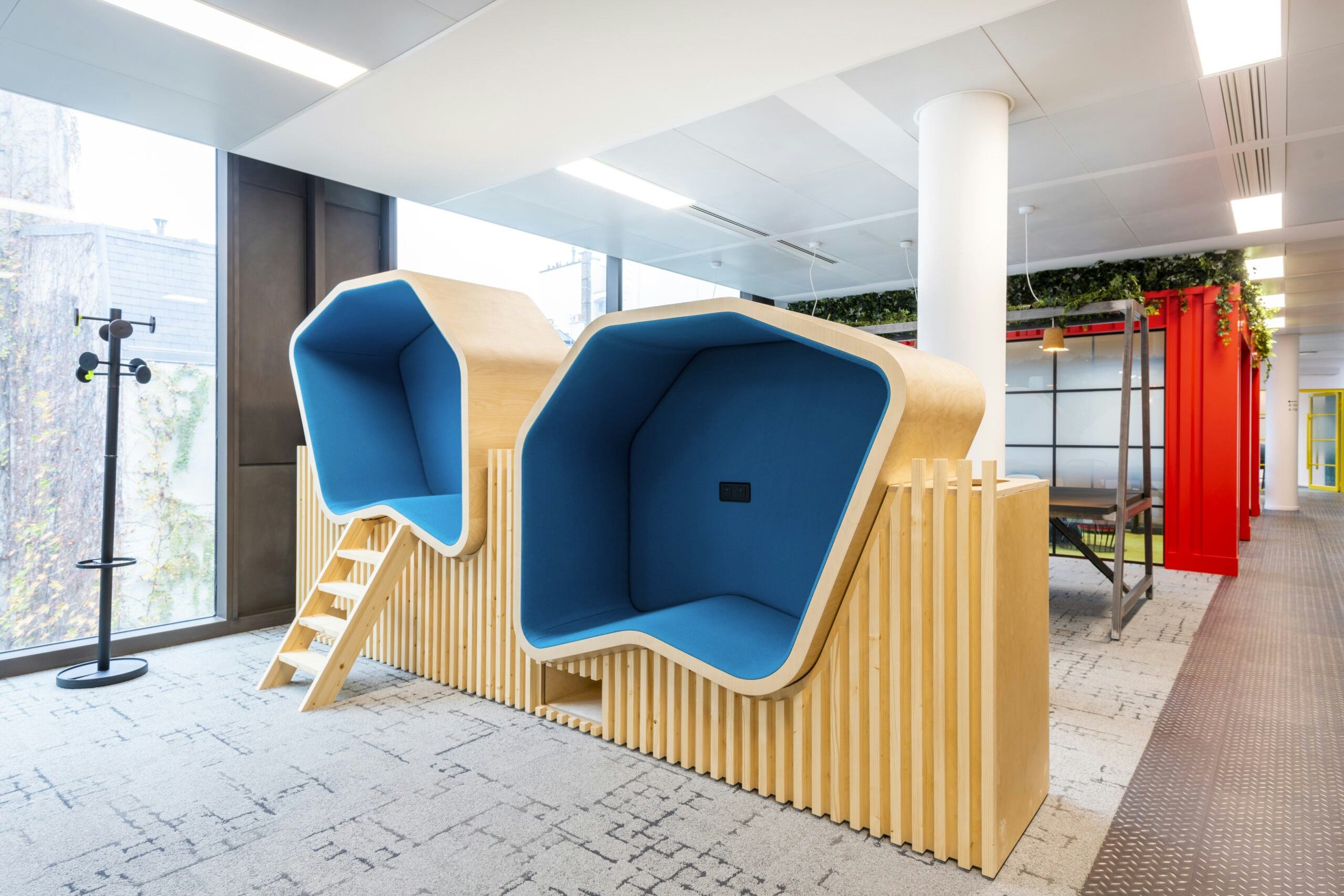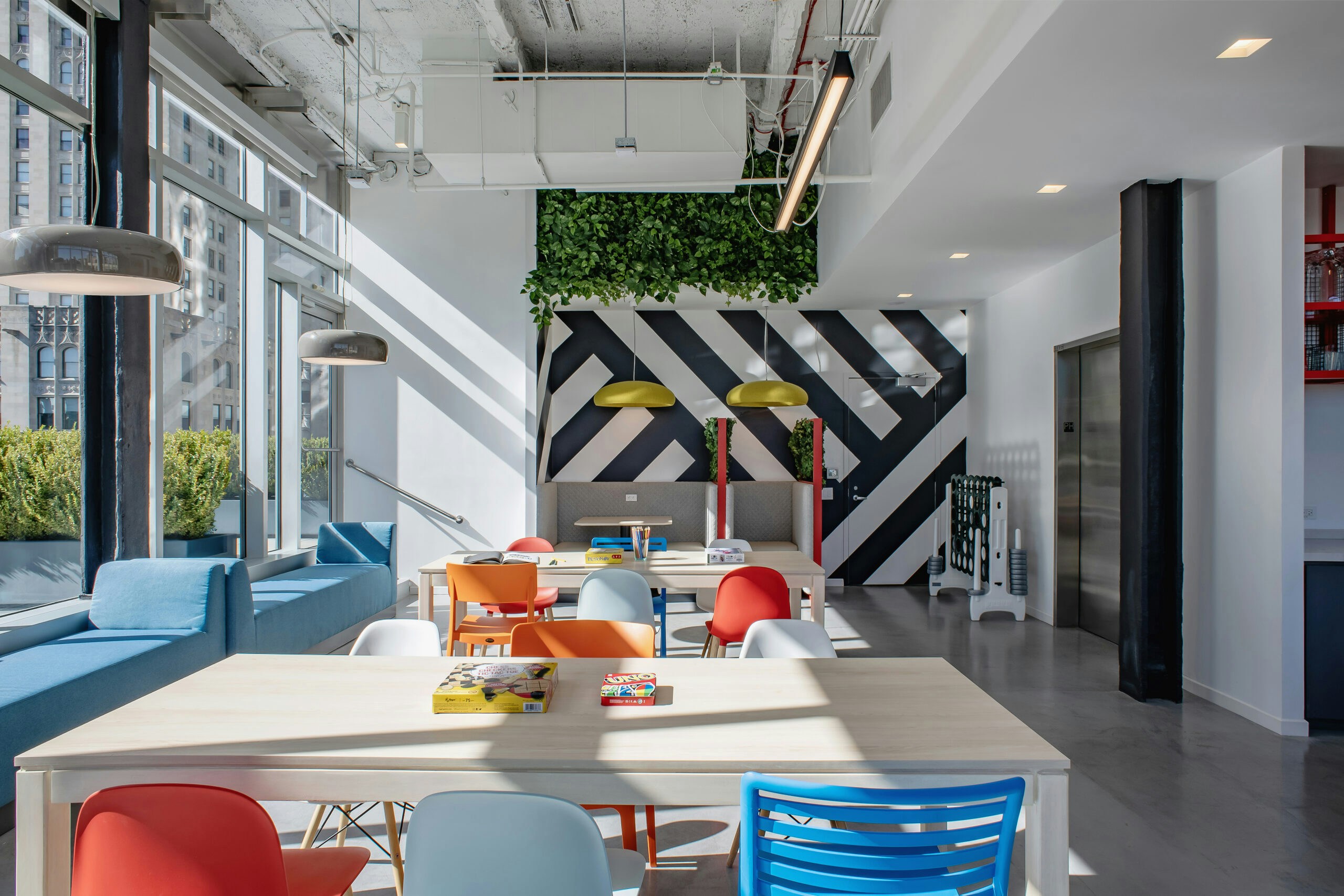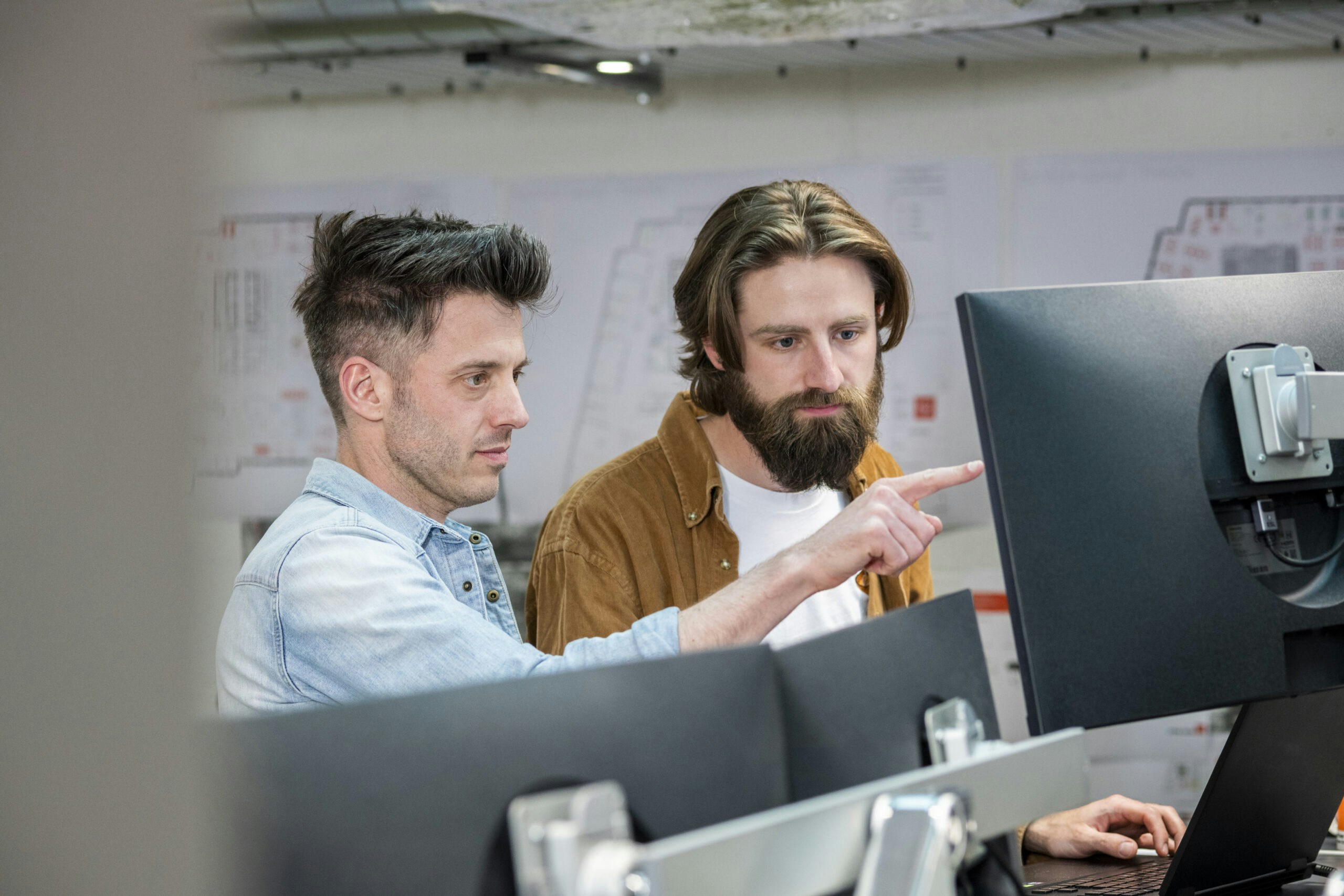A Cat A space delivers the bare essentials; a clean shell with core services and basic finishes, while a Cat B fit out transforms that blank canvas into a tailor-made workspace complete with partitions, premium finishes, tech installations, and furniture.
In a Cat A fit out, you’ll typically receive the shell and core of the building plus the essential services brought to the floorplate. This usually comprises the installation of suspended ceilings, painted walls, raised floors or screed, basic lighting, heating, ventilation and air-conditioning (HVAC), fire detection and alarm systems, and mechanical risers brought to a nominated point. Cat A does not include any demountable partitioning, bespoke fixtures, or tenant-specific décor.
A Cat A+ fit out takes the Cat A specification a step further by incorporating enhanced elements such as upgraded lighting schemes, raised floor finishes, improved ceiling grids, and more comprehensive mechanical and electrical distribution to tenant zones. It provides a more complete back-of-house installation without delving into bespoke partitioning or furniture.
A Cat B fit out is the tenant’s opportunity to bring the space to life with their own brand identity and functional requirements. This phase covers the design and construction of internal walls and doors, bespoke joinery, feature ceilings, specialist lighting, full IT and telecoms cabling, kitchenette and breakout area fit-outs, and all loose furniture, artwork and accessories needed to create a fully operational workspace.
As a tenant, it’s essential to clarify with your landlord which level of finish you will be handed over – a Cat A, CAT A+ or Cat B – so that you can accurately budget, programme your project and avoid scope-creep. Each of these is discussed in more detail below.
